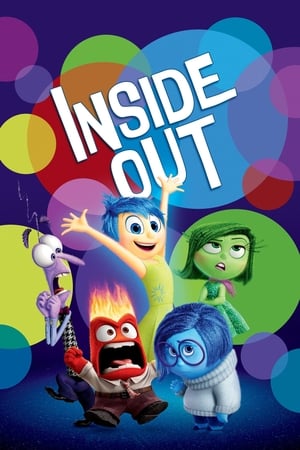“Inside Out,” a captivating comedy-adventure delving into the mind of an 11-year-old girl, has the makings of a timeless classic that resonates long after viewing, sparking personal reflections. With the potential to liberate American studio animation from a creative slump, it steers clear of clichés plaguing many Pixar and competitor films. The brilliance of “Inside Out” lies in its ability to feel refreshingly new while drawing inspiration from animated classics, notably Hayao Miyazaki, and exploring universally relatable situations and emotions.
The film primarily unfolds within the intricate recesses of young Riley’s (Kaitlyn Dias) mind, colored by her emotions embodied by five distinct characters: Joy (Amy Poehler), Sadness (Phyllis Smith), Fear (Bill Hader), Disgust (Mindy Kaling), and Anger (Lewis Black). The film introduces a master control room where these emotions constantly vie for dominance, shaping Riley’s reactions to the world. The representation of memories as color-coded spheres adds a visually captivating layer to the narrative, with Riley’s mental landscape resembling a blend of mass-market toys, fantasy films, and family-friendly theme parks.
Riley’s move from Minnesota to San Francisco becomes the catalyst for the story, as Joy and Sadness inadvertently embark on a journey outside the control room, risking the deletion of core memories. “Inside Out” uniquely presents figurative characters and locations, departing from Pixar’s usual fantasy or science fiction themes. Rooted in reality, the film explores Riley’s emotional interior, paralleling her external experiences with inner struggles, fond memories, and unexplored associations.
The narrative gracefully weaves psychological concepts, poetic elements, and nods to artistic schools, creating a multi-layered experience for all audiences. The characters navigate through Imagination Land, Abstract Thought, and other cleverly crafted realms, delivering a blend of excitement and humor. The film’s depth becomes even more apparent as it subtly addresses depression, portraying Riley’s emotional struggles with authenticity and empathy.
“Inside Out” refrains from oversimplifying emotions, recognizing the value each emotion contributes to an individual’s experiences. The film masterfully depicts how memories can evoke joy, sadness, anger, fear, or disgust based on the narrative of our lives. As the story unfolds, it challenges the notion of a simplistic “happy ending,” reminding audiences of the complexity inherent in emotional journeys.
What sets “Inside Out” apart is its nuanced portrayal of depression, avoiding explicit labels while capturing the essence of Riley’s emotional turmoil. The film beautifully conveys the message that overcoming pain requires patience and love, devoid of a magical quick fix. In doing so, it resonates with the wisdom that emotions are uncontrollable, emphasizing the importance of choices in response to them.
In conclusion, “Inside Out” stands as a groundbreaking exploration of emotion, transcending typical animated fare by embracing the intricacies of the human psyche. With its rich storytelling, inventive visuals, and emotional depth, the film marks a turning point in American studio animation, setting a new standard for future endeavors in the genre.


